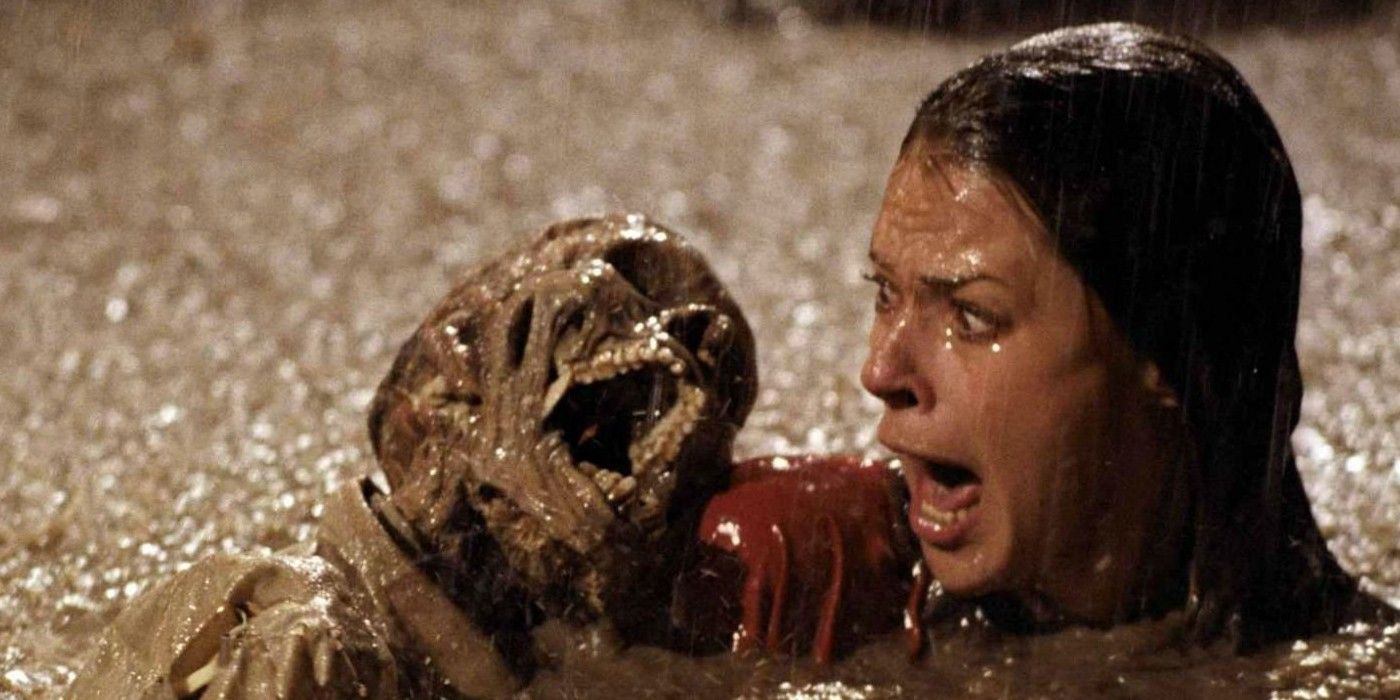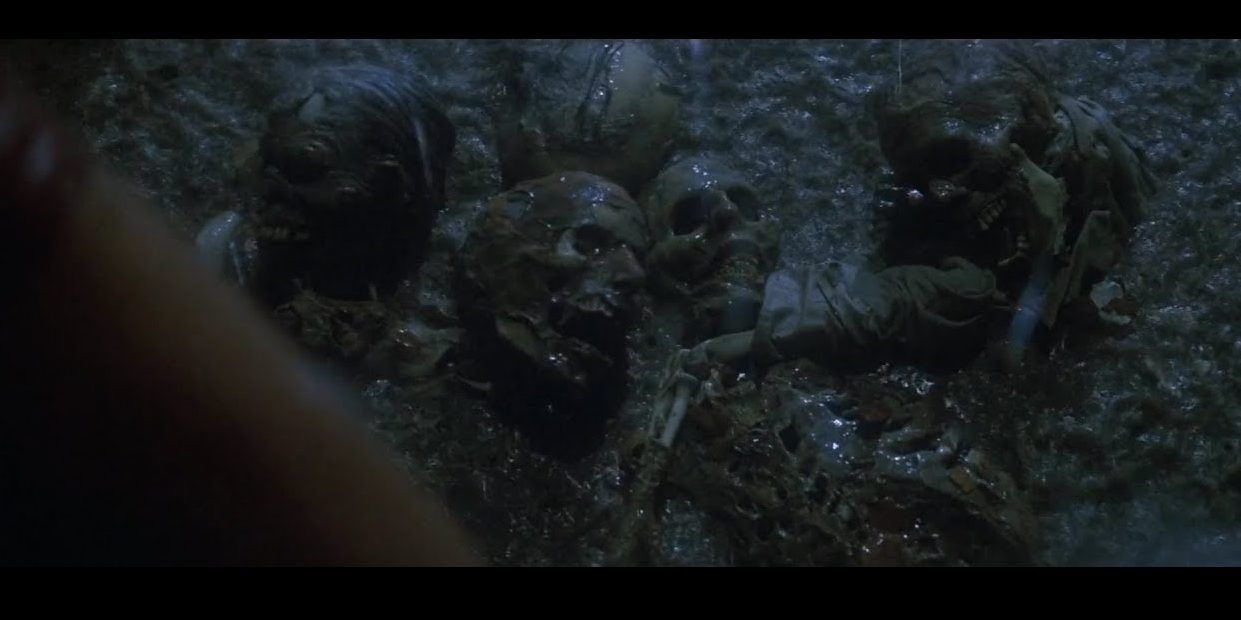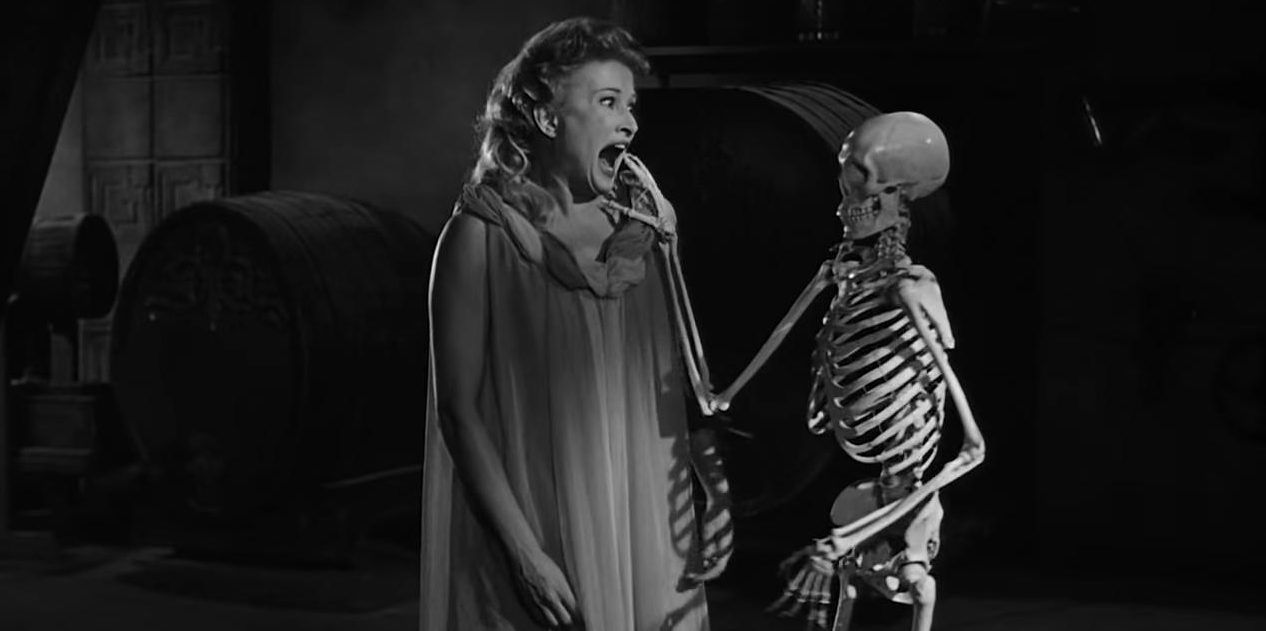Special effects in film can be incredibly convincing. Watching films like 1959's House on Haunted Hill and other horror films from the black and white era, viewers may not expect the effects to look as graphic and grotesque as they do in the slasher and torture porn films of the modern era. For instance, Vincent Price stringing up skeletons from an acid bath is laughable nowadays; however, the body parts in modern films like Hostel are grotesque.
Even when the effects are amazing, viewers know it's all fake. It shouldn't be possible for audiences to see a real dead body on film even though a good effect is meant to invoke feelings of terror. Fans assure themselves that none of of this is real, that it's just props; however, sometimes those props are more real than expected. That silly skeleton in House on Haunted Hill for instance is real, and it's not the only one.
The Poltergeist trilogy often draws a lot of controversy over its supposed curse. Four actors, Dominique Dunne, Julian Beck, Will Sampson and Heather O'Rourke, died shortly or during the production of the film trilogy, and O'Rourke was only twelve when she passed on during the production of Poltergeist III. This in part led to the rumor that the trilogy is cursed, and many believe the curse started because the film used real skeletons instead of props.
This came to a head with the recently released episode of Shudder's docu-series Cursed Films, which analyzes and deconstructs the stories surrounding cursed productions. In an episode centered around the Poltergeist franchise, Craig Reardon, the special effects and makeup supervisor of the first film, expresses frustration over the accusation that the film is cursed because he used real skeletons.
More importantly, Reardon points out that his film is far from unique in regards to using actual skeletons, establishing that many low-budget horror films before and since Poltergeist use them because it's more cost and time efficient to buy a cadaver than it is to ask an artist to sculpt a realistic skeleton. This pragmatic explanation demystifies the process and reasoning behind the skeletons, but it begs the question which films use skeletons and which do not.
Reardon in Cursed Films further cites two specific examples of classic horror films that use real skeletons: House on Haunted Hill and Universal's Frankenstein. Unsurprisingly, these films are far from the only ones to do so.; however, some films use skeletons unintentionally.
Another classic horror film, Dawn of the Dead, features a real skeleton that make-up specialist Tom Savini bought from a prop collector. Savini and the collector thought the skeleton was fake, but years later, police realized the skeleton belonged to a woman who had died a century earlier.
Sometimes the dead bodies on screen even have real flesh still attached to them. Films like Beyond the Darkness (1979), Men Behind the Sun (1988) and Unrest (2006) feature real autopsy footage and cadavers on-screen. Men Behind the Sun in particular is disturbing, as the Chinese film features the cadaver of a child; however, the directors of these three films claim they wanted to create a compelling effect that wouldn't look fake to an audience.
Having real skeletons and bodies on set is not just for horror films. The prop team for Apocalypse Now tried to sneak real corpses on set to add authenticity to the scene, and the cast and crew only learned about these bodies when they complained about the smell of dead rats, which had grown putrid. One prop guy remarked, "Wait till he hears about the dead bodies."
This practice has a long history that spans outside expected films. It also raises many moral questions as well as leaving fans wondering if the skeleton on screen could be real or not, and if so, did the crew even know?



